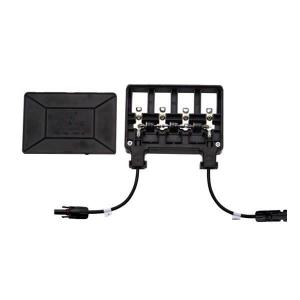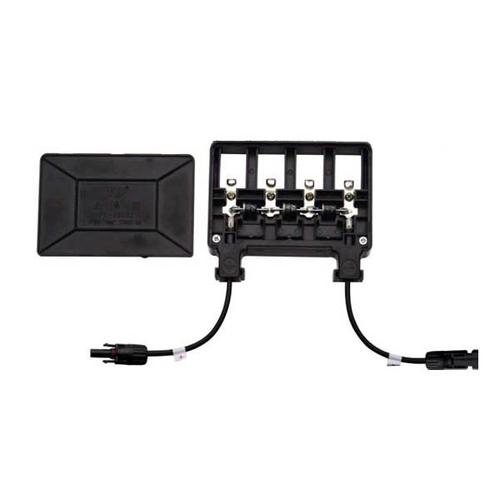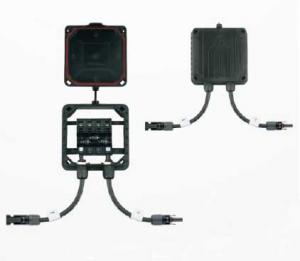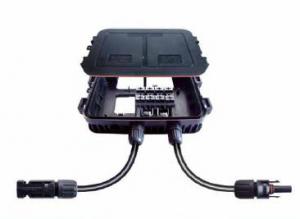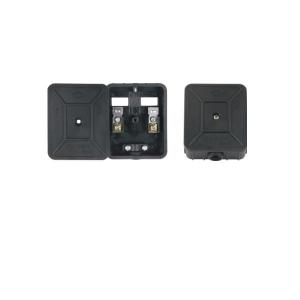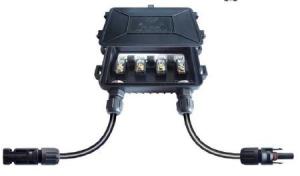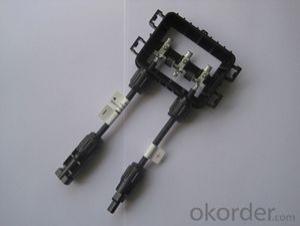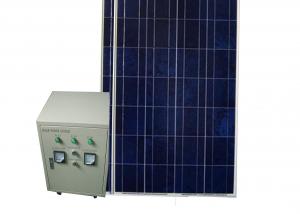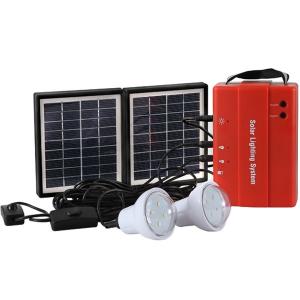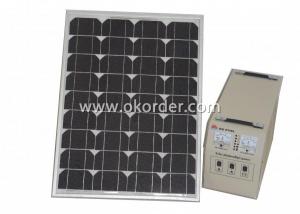Solar Junction box PV-JB002 ST01
- Loading Port:
- China Main Port
- Payment Terms:
- TT OR LC
- Min Order Qty:
- -
- Supply Capability:
- 10000 set/month
OKorder Service Pledge
OKorder Financial Service
You Might Also Like
Solar Junction box ,Due to highly robustness,UV-resistance,the touch protection a high grade connection is guaranteed for many
Solar Junction box ,Due to highly robustness,UV-resistance,the touch protection a high grade connection is guaranteed for many years
Rated voltage 1000 V
Rated current 16A
Contact resistance ≤5mΩ
Dia of pin or socket 3mm /4mm
Protection degree(mated,junction box closed/unmated) IP65/IP2X
Operating temperature -40 C to +85C
Insulation material PPO
Contact material Copper,silver plated
The junction box's inner shoulder be filled with glue under working
- Q: Can a solar energy system be installed on a concrete roof?
- Certainly! Solar energy systems can indeed be installed on concrete roofs. Concrete roofs are actually considered one of the best surfaces for installing solar panels. They are usually flat, stable, and long-lasting, making them an excellent base for the panels. Moreover, concrete roofs often have plenty of space and are not hindered by nearby trees or buildings, which allows for optimal sunlight exposure. To install the panels on a concrete roof, special mounting systems are used to securely attach them and withstand their weight. All in all, concrete roofs are a superb option for installing a solar energy system.
- Q: How much space is required for installing a solar energy system?
- The space required for installing a solar energy system depends on various factors such as the capacity of the system, type of solar panels used, and available sunlight. Generally, for a residential system, an area of around 100-400 square feet is sufficient. However, larger commercial or utility-scale systems may require several acres of land. It is recommended to consult with a solar installer or engineer to determine the exact space requirements for a specific solar energy system.
- Q: How do solar energy systems impact the quality of indoor air?
- Solar energy systems have a positive impact on the quality of indoor air. Unlike fossil fuel-based power generation, solar energy does not emit harmful pollutants such as carbon dioxide, sulfur dioxide, or nitrogen oxides. By replacing traditional energy sources with solar power, we can significantly reduce air pollution and improve the air quality inside buildings, making them healthier and safer for occupants.
- Q: Can solar energy systems be used in areas with limited access to distribution networks?
- Yes, solar energy systems can be used in areas with limited access to distribution networks. This is because solar energy systems can operate independently, generating electricity from sunlight and storing it in batteries for use when needed. This makes them a viable and sustainable solution for areas without reliable access to power grids or distribution networks.
- Q: Can solar energy systems be used for powering wineries?
- Certainly, wineries can make use of solar energy systems to power their operations. Solar power is an eco-friendly and renewable energy source that can offer a consistent and dependable supply of electricity for winemaking activities. Various processes in wineries, including grape crushing, fermentation, cooling, bottling, and storage, demand a substantial amount of energy. On that note, by installing solar panels, wineries can produce their own electricity, reducing their dependence on fossil fuels and decreasing their carbon footprint. It is possible to install solar energy systems on winery buildings' rooftops or in nearby open spaces like vineyards. These systems consist of solar panels that convert sunlight into electricity using the photovoltaic effect. The generated electricity can be directly used to power winery operations or stored in batteries for later use, ensuring a constant power supply even during cloudy days or at night. One of the significant advantages of adopting solar energy in wineries is the potential for long-term cost savings. Although the initial installation cost of solar panels may be relatively high, the operational expenses are considerably lower compared to conventional energy sources. Once the solar system is in place, wineries can enjoy reduced or even eliminated electricity bills, resulting in substantial savings over the system's lifespan. Furthermore, solar energy systems for wineries can be customized to meet specific energy requirements. By conducting a thorough energy assessment, wineries can determine their electricity demand and tailor the solar system accordingly. This allows wineries to have a personalized solution that fulfills their energy needs and ensures optimal performance. Besides the financial and environmental benefits, employing solar energy in wineries can also enhance their brand image and reputation. With consumers becoming increasingly conscious of sustainability and environmentally friendly practices, wineries that demonstrate a commitment to clean energy can attract eco-conscious customers. As a result, this can lead to increased sales and customer loyalty. In conclusion, solar energy systems present a practical and efficient option for powering wineries. By harnessing the sun's power, wineries can reduce their reliance on conventional energy sources, cut down on operating costs, and contribute to a greener and more sustainable future.
- Q: Can solar energy systems be used in remote areas without access to the electricity grid?
- Yes, solar energy systems can be used in remote areas without access to the electricity grid. Solar panels can be installed to capture sunlight and convert it into electricity, which can then be stored in batteries for later use. This allows remote areas to have a reliable source of electricity, even without being connected to the grid.
- Q: How much does it cost to install a solar energy system?
- The cost of installing a solar energy system can vary depending on various factors such as the size of the system, location, equipment used, and installation costs. On average, residential solar energy systems can range from $15,000 to $25,000 after accounting for tax incentives and rebates. However, it is recommended to obtain personalized quotes from solar installation companies to get an accurate estimate for your specific needs.
- Q: What is concentrated solar power (CSP)?
- Concentrated solar power (CSP) is a renewable energy technology that uses mirrors or lenses to concentrate sunlight onto a small area, typically a receiver or a solar tower. This concentrated sunlight produces heat, which is then used to generate electricity through steam turbines or other heat engines. CSP systems can store energy for later use, making it a reliable and efficient source of power.
- Q: Can solar energy systems be used in areas with limited sunlight hours?
- Yes, solar energy systems can be used in areas with limited sunlight hours. While it is true that solar panels produce the most energy when they are exposed to direct sunlight, advancements in technology have made it possible for solar systems to still generate electricity even in areas with limited sunlight. One way to address the issue of limited sunlight hours is by installing solar panels that are more efficient at capturing and converting sunlight into electricity. These high-efficiency solar panels can maximize the energy production even in areas with less sunlight. Additionally, the use of tracking systems that tilt and follow the sun's path throughout the day can also help increase the energy output. Another approach is to store excess energy generated during peak sunlight hours in batteries. This stored energy can then be used during periods of low sunlight, allowing the solar system to continue powering homes or businesses even when the sun is not shining. Moreover, the integration of solar power with other renewable energy sources, such as wind or hydroelectric power, can help compensate for limited sunlight hours. By combining different sources, a more reliable and consistent energy supply can be achieved. Overall, while limited sunlight may affect the energy production of solar systems, there are various technological solutions and strategies that can be implemented to make solar energy viable even in areas with fewer sunlight hours.
- Q: Can solar energy systems be used in areas with limited skilled labor?
- Yes, solar energy systems can be used in areas with limited skilled labor. Solar energy systems are designed to be user-friendly and require minimal technical expertise for installation and maintenance. Additionally, there are various training programs and resources available that can help train local individuals in the installation and maintenance of solar energy systems, enabling them to acquire the necessary skills. This allows for the adoption of solar energy in areas with limited skilled labor, promoting renewable energy usage and providing economic opportunities for the local population.
Send your message to us
Solar Junction box PV-JB002 ST01
- Loading Port:
- China Main Port
- Payment Terms:
- TT OR LC
- Min Order Qty:
- -
- Supply Capability:
- 10000 set/month
OKorder Service Pledge
OKorder Financial Service
Similar products
Hot products
Hot Searches
Related keywords
